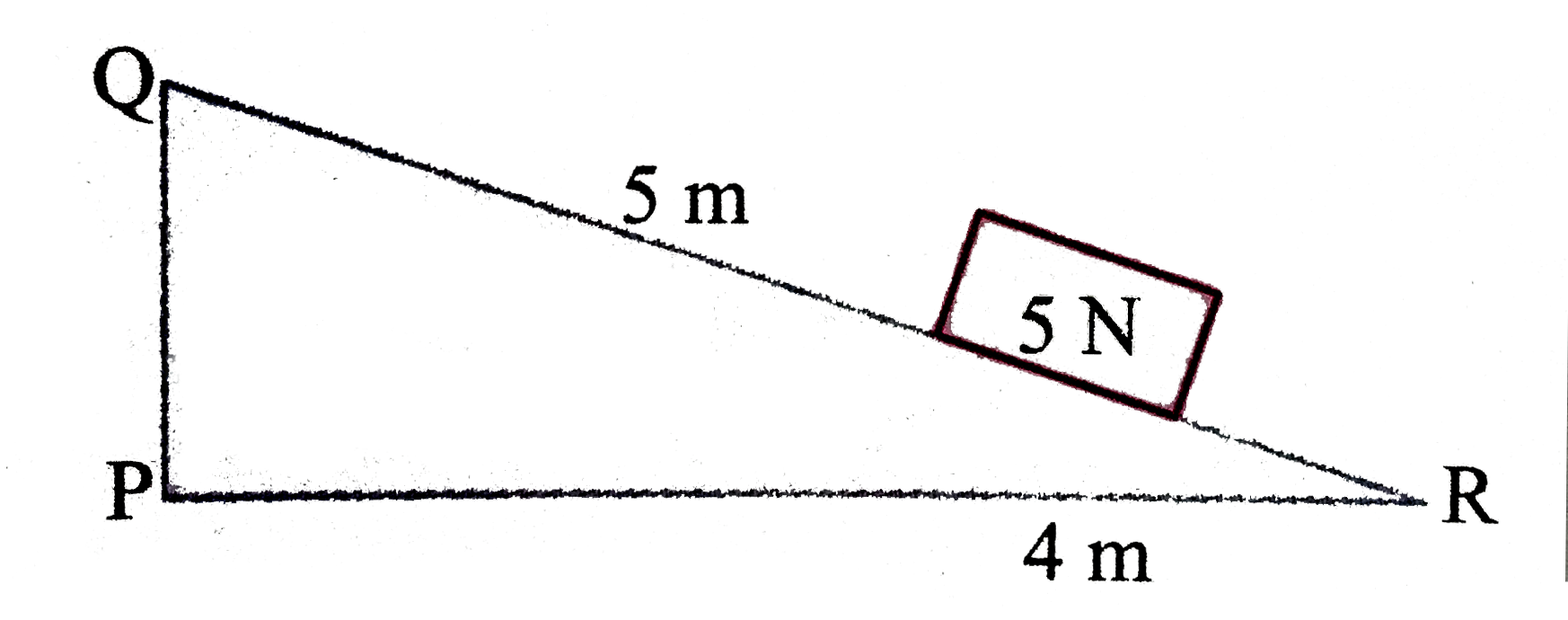A ball moves on a frictionless inclined table without slipping. The work done by the surface on the ball is :
Positive
Negative
Zero
None of these
The correct Answer is:C
To solve the problem of determining the work done by the surface on a ball moving on a frictionless inclined table without slipping, we can follow these steps:
Step 1: Understand the Forces Acting on the Ball
The ball experiences two main forces while on the inclined table:
- The gravitational force acting downward (weight of the ball, mg).
- The normal force exerted by the surface of the inclined table, which acts perpendicular to the surface.
Step 2: Analyze the Motion
Since the table is frictionless, there is no frictional force acting on the ball. The ball rolls without slipping, which means that the point of contact between the ball and the surface does not slide.
Step 3: Determine the Work Done by the Normal Force
The work done by a force is given by the equation:
W=∫F⋅dx
Where F is the force and dx is the displacement. However, in this case, the normal force acts perpendicular to the displacement of the ball along the inclined surface.
Step 4: Calculate the Dot Product
Since the normal force is perpendicular to the displacement of the ball, the angle θ between the normal force and the displacement vector is 90 degrees. Therefore, the work done by the normal force can be expressed as:
W=F⋅d⋅cos(θ)
Where θ=90∘. The cosine of 90 degrees is zero:
W=F⋅d⋅cos(90∘)=F⋅d⋅0=0
Step 5: Conclusion
Thus, the work done by the surface on the ball is zero:
Work done by the surface on the ball=0
The ball experiences two main forces while on the inclined table:
- The gravitational force acting downward (weight of the ball, mg).
- The normal force exerted by the surface of the inclined table, which acts perpendicular to the surface.
Since the table is frictionless, there is no frictional force acting on the ball. The ball rolls without slipping, which means that the point of contact between the ball and the surface does not slide.
The work done by a force is given by the equation:
W=∫F⋅dx
Where F is the force and dx is the displacement. However, in this case, the normal force acts perpendicular to the displacement of the ball along the inclined surface.
Since the normal force is perpendicular to the displacement of the ball, the angle θ between the normal force and the displacement vector is 90 degrees. Therefore, the work done by the normal force can be expressed as:
W=F⋅d⋅cos(θ)
Where θ=90∘. The cosine of 90 degrees is zero:
W=F⋅d⋅cos(90∘)=F⋅d⋅0=0
Thus, the work done by the surface on the ball is zero:
Work done by the surface on the ball=0
Similar Questions
Knowledge Check
- Question 1 - Select One
A ball of mass m moves with speed v and stricks a wall having infinite mass and it returns with same speed then the work done by the ball on the wall is
AZeroBmvjoe–sCm/vjoe–sDv/mjoe–s - Question 2 - Select One
A ball of mass 'm' collides with a wall with speed 'V' and rebounds on the same line with the same speed. If the mass of the wall is taken as infinite, then the work done by the ball on the wall is
Amv2BzeroC12mv2D2mv2 - Question 3 - Select One
A ball of mass m collides with a wall with speed v and rebounds on the same line with the same speed. If the mass of the wall is taken as infinite, then the work done by the ball on the wall is
Amv2B12mv2C2mvDzero
The cue stick hits a cue ball horizontally a distance x above the centre of the ball. Find the value of x for which the cue ball will instantaneously roll without slipping. Calculate the answer in terms of the radius R of the ball.
 View Solution
View SolutionA body is moving at constant speed over a frictionless surface. What is the work done by the weight?
View SolutionA ball of mass m collides with a wall with speed v and rebounds on the same line with the same speed. If mass of the wall is taken as infinite, then the work done by the ball on the wall is
View SolutionIf a spherical ball rolls on a table without slipping, the fraction of its total energy associated with rotation is
View SolutionA weight of 5N is moved up a frictionless inclined plane from R to Q as shown.

What is the work done in joules?View Solution

